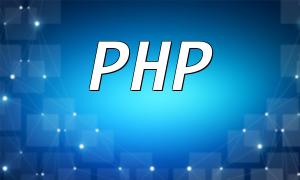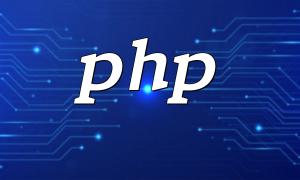In modern PHP development, code readability and maintainability are crucial. PHP7 introduces namespaces and autoloading mechanisms that provide developers with better ways to organize and manage code. By properly using these features, developers can reduce naming conflicts, improve code structure, and ultimately enhance both readability and maintainability. This article will explain how to use PHP7 namespaces and autoloading mechanisms to optimize your PHP code.
Namespaces are an effective way to resolve naming conflicts. In PHP, a namespace encapsulates classes, interfaces, functions, and constants. It helps us organize related code logically, avoiding naming conflicts between different parts of the code, which ultimately improves code readability.
We define namespaces using the `namespace` keyword. Here's a simple example:
namespace AppControllers;
<p>class UserController {<br>
// Class implementation...<br>
}<br>
In this example, we define a namespace called `AppControllers` and create a `UserController` class within it. This ensures that we can reference this class elsewhere without worrying about naming conflicts with other classes or functions.
PHP7 introduces a unified autoloading mechanism that allows us to automatically load class and interface definitions. This means we don't need to manually `require` or `include` class files. PHP will automatically load the required files based on the class name, reducing redundancy and the chances of errors in the code.
You can register a custom autoload function using the `spl_autoload_register()` function. Here's an example:
spl_autoload_register(function($className) {
$className = str_replace("\\", "/", $className); // Replace backslashes with slashes
$classFile = __DIR__ . '/' . $className . '.php'; // Construct file path
if (file_exists($classFile)) {
require_once $classFile;
}
});
In this example, we register an anonymous function with `spl_autoload_register()`. This function replaces the backslashes in the class name (used in namespaces) with slashes, constructs the file path, and automatically loads the class file if it exists.
To better demonstrate how namespaces and autoloading mechanisms work together to improve code readability and maintainability, let's walk through a simple example. In this example, we create two namespaces: `AppControllers` and `AppModels`, which are used to store controller and model classes, respectively.
First, let's create a `UserController` class under the `AppControllers` namespace:
namespace AppControllers;
<p>use AppModels\UserModel;</p>
<p>class UserController {<br>
public function listUsers() {<br>
$userModel = new UserModel();<br>
$users = $userModel->getAllUsers();<br>
// Process user list data...<br>
}<br>
}<br>
Next, let's create a `UserModel` class under the `AppModels` namespace:
namespace AppModels;
<p>class UserModel {<br>
public function getAllUsers() {<br>
// Query the database for the list of users...<br>
return $users;<br>
}<br>
}<br>
Finally, we register the autoload function using `spl_autoload_register()`, and we instantiate the controller class to handle user-related logic:
use AppControllers\UserController; <p>$userController = new UserController();<br> $userController->listUsers();<br>
By following these steps, we successfully combine namespaces and autoloading mechanisms to make the code clearer and easier to maintain.
Using PHP7's namespaces and autoloading mechanisms can significantly improve code readability and maintainability. Namespaces help us better organize related classes, interfaces, functions, and constants while avoiding naming conflicts. Autoloading eliminates the need for manually including class files, reducing redundant code. By combining both features, we can write cleaner and more manageable code, allowing us to focus on developing business logic.










